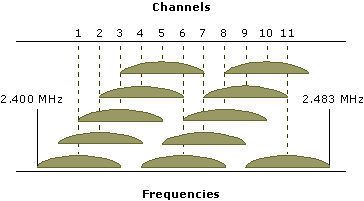- AccurateRip
- Acoustid
- AES/EBU
- AirPlay
- Amplifier
- aptX
- Audio file formats
- ASRC
- AVB
- Bit perfect jitter
- Bits: 16 or 24
- Bit perfect playback
- Bitrate
- Bluetooth
- Burn-in
- BWF
- Cables
- CDtext
- Chromecast
- Clipping
- Clock
- Codec
- Compression
- CRC
- Crossover
- Cue sheet
- DAC
- Damping
- DASH
- Digital
- Digital Room Correction
- Dither
- DLNA
- Drivers
- DoP
- DSP
- EBU R128 (loudness)
- FFT
- FireWire
- Freedb
- Gapless playback
- Generation loss
- HDMI
- Headphone listening
- Hearing
- Hires recording
- Homeplug
- I2S
- ID3
- Inter sample peak
- LDAC
- Linearity (DAC)
- Memory playback
- Music Server
- OCF
- OFC
- PCM
- Perception
- RAID
- ReplayGain
- Ripping
- RFI
- RIAA
- Router
- Sampling, up and over
- Sample Rate Conversion
- Speakers
- S/PDIF
- Storage
- Sync
- Tagging
- Toslink
- Transcoding
- UAA
- Units
- UPnP
- USB
- VST
- WiFi
- WiSA
WiFi
WiFi has become extremely popular to connect to the network.
A Wi-Fi network (802.11 G) has a gross throughput of 53 Mbit/s (network speed is expressed in bits per second, not bytes).
Playing audio with CD quality is playing 16-bit PCM audio at 44.1 kHz.
This is 1411 kbs.
A 24/192 kHz requiring 9216 kbs
Although WiFi has a lot more overhead compared with a wired connection, even an older standard like G has sufficient throughput to play highres over the WiFi.
Dropouts
If reception is poor or you neighbors are using the same channels, you might run into troubles (dropouts).
Wi-Fi channels and their overlap, 1,6,11 is the non-overlapping combination
In these case a wired connection can be the answer.
Ethernet has less overhead and is faster (100/1000 Mbit/s).
You don't share it with your neighbors either.
However don't be surprised if WiFI AC beats you're wired connection.
If it is not feasible to run a wire, a home plug (Ethernet over the power lines) is an option.
Upgrading to 802.11 N or AC might help too as they have a higher throughput.
The alphabet
What we call Wi-Fi is a IEEE standard.
If you buy a device you see specs like 802.11b/g/n.
802.11 is the name of the standard and the characters indicate a version.
Over the years speed improved substantial.
Technologies like Dual band (2.4 and 5 GHz), MIMO ( multiple-input multiple-output antennas) and modulation schemes like OFDM allow at the present for 1300 Mbps.
| 802.11 | year | Mbps | Band (GHz) |
| - | 1997 | 2 | 2.4 |
| b | 1999 | 11 | 2.4 |
| g | 2002 | 54 | 2.4 |
| n | 2009 | 54 - 600 | 2.4/5 |
| ac | 2013 | 1300 | 2.4/5 |

Maslow's hierarchy
IEEE 802.11 - Wikipedia


